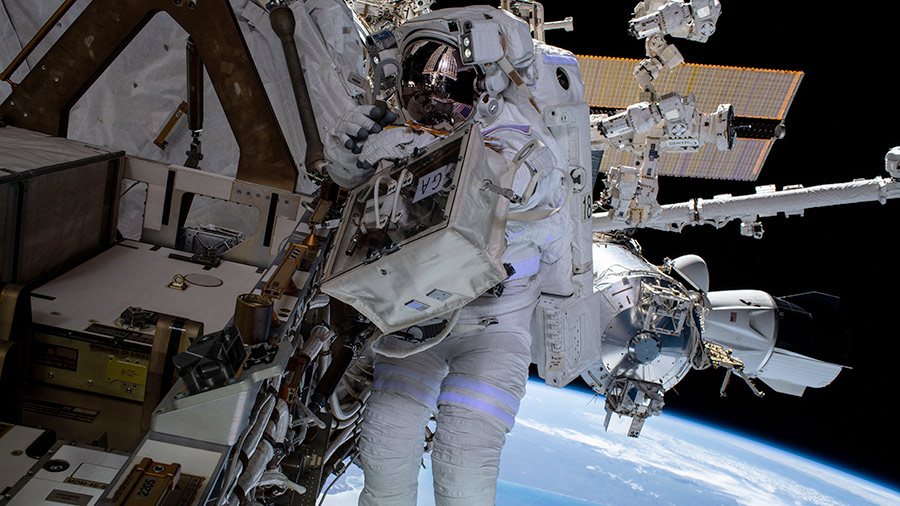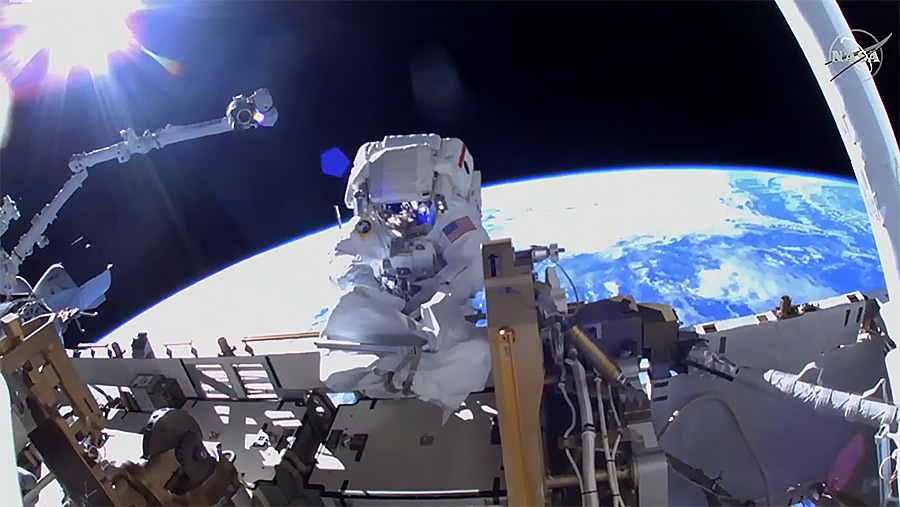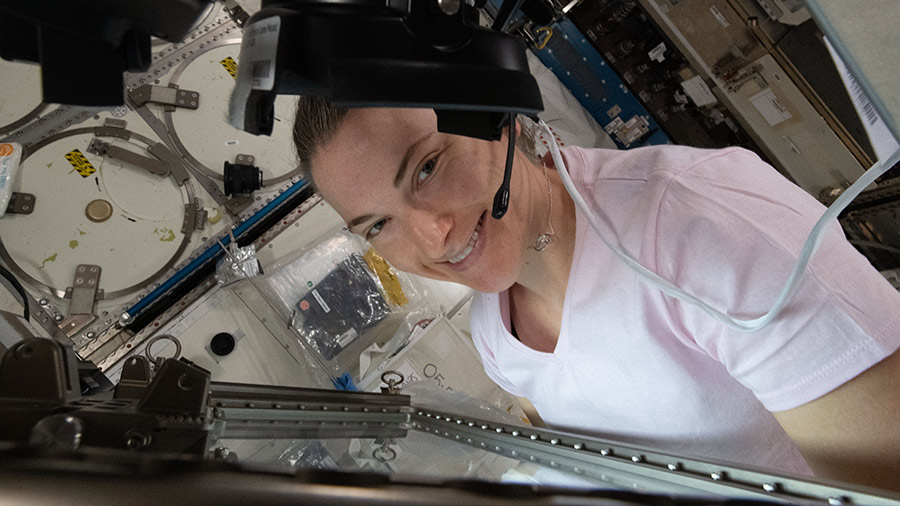
A new trio awaits its launch to join the Expedition 66 crew on Friday while two astronauts are preparing for next week’s spacewalk. Human research rounded out the science schedule aboard the International Space Station on Thursday.
Three cosmonauts are counting down to their lift off aboard the Soyuz MS-21 crew ship at 11:55 a.m. EDT on Friday from the Baikonur Cosmodrome in Kazakhstan. Soyuz Commander Oleg Artemyev will lead first-time space-flyers Denis Matveev and Sergey Korsakov on a three-hour and 10-minute ride to the Prichal module where they will dock beginning a six-and-a-half-month mission aboard the station. NASA TV, on the app and the website, will begin its live mission coverage of the crew launch and docking activities at 11:15 a.m. on Friday.
Meanwhile, a second spacewalk is scheduled for Wednesday, March 23, for more upgrades at the orbiting lab. Flight Engineers Raja Chari of NASA and Matthias Maurer of ESA (European Space Agency) will set their spacesuits to battery power at 8:50 a.m. signifying the start of their spacewalk. The duo will spend about six-and-a-half-hours installing new thermal system and electronics components. NASA TV will begin its live spacewalk coverage at 7:30 a.m. on Wednesday.
The spacewalking pair was joined Thursday afternoon by NASA Flight Engineers Kayla Barron and Tom Marshburn reviewing robotics procedures necessary to support the astronauts during next week’s external maintenance job. Chari and Maurer also spent Thursday organizing their spacewalking tools and resizing their U.S. spacesuits.
NASA Flight Engineer Mark Vande Hei worked inside the Kibo laboratory module setting up a small satellite deployer. In the afternoon, Vande Hei studied the effectiveness of detergents in microgravity then strapped sensors to himself to measure his performance during an exercise study.
Commander Anton Shkaplerov and Flight Engineer Pyotr Dubrov continued evaluating a specialized suit, the lower body negative pressure suit, for its ability to counteract the effects of weightlessness on the human body. Doctors are studying the suit’s ability to offset space-caused head and eye pressure by drawing fluids toward the legs and feet while expanding veins and tissues.









